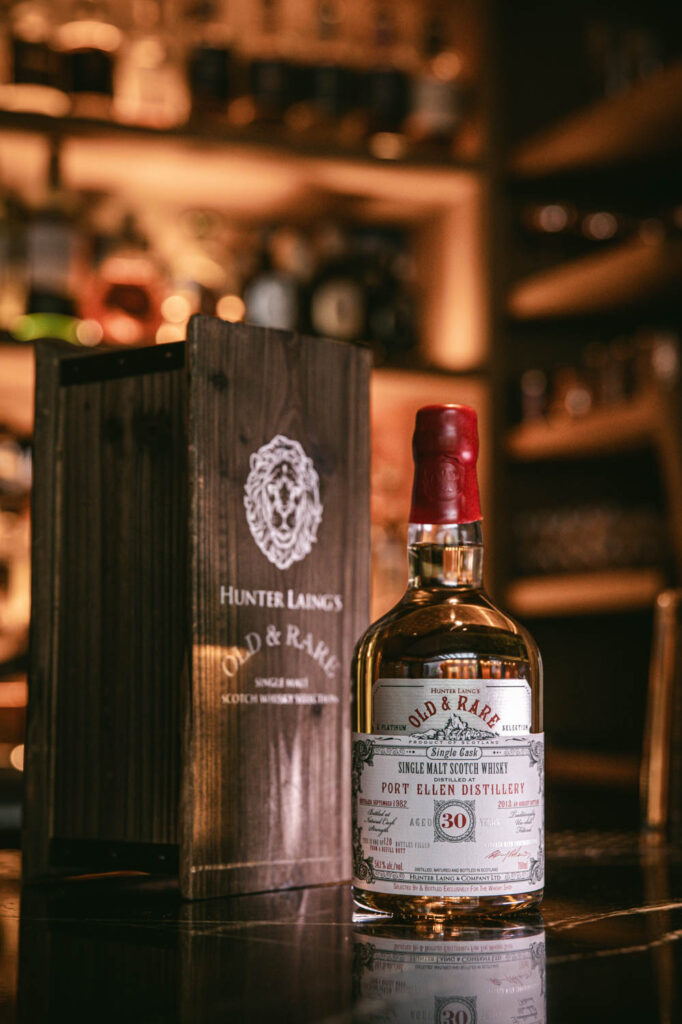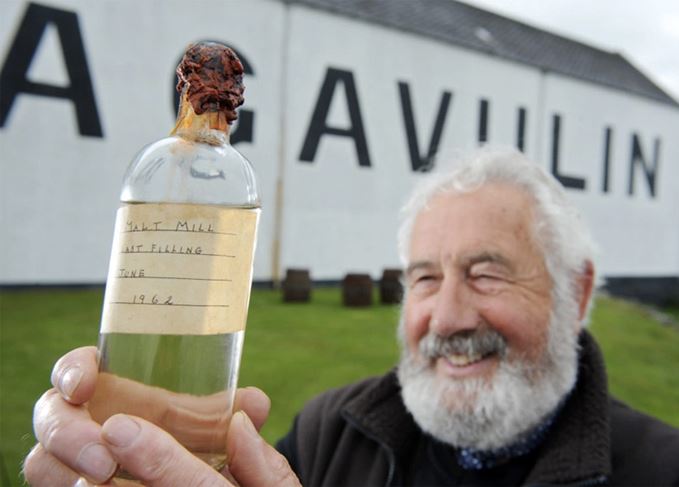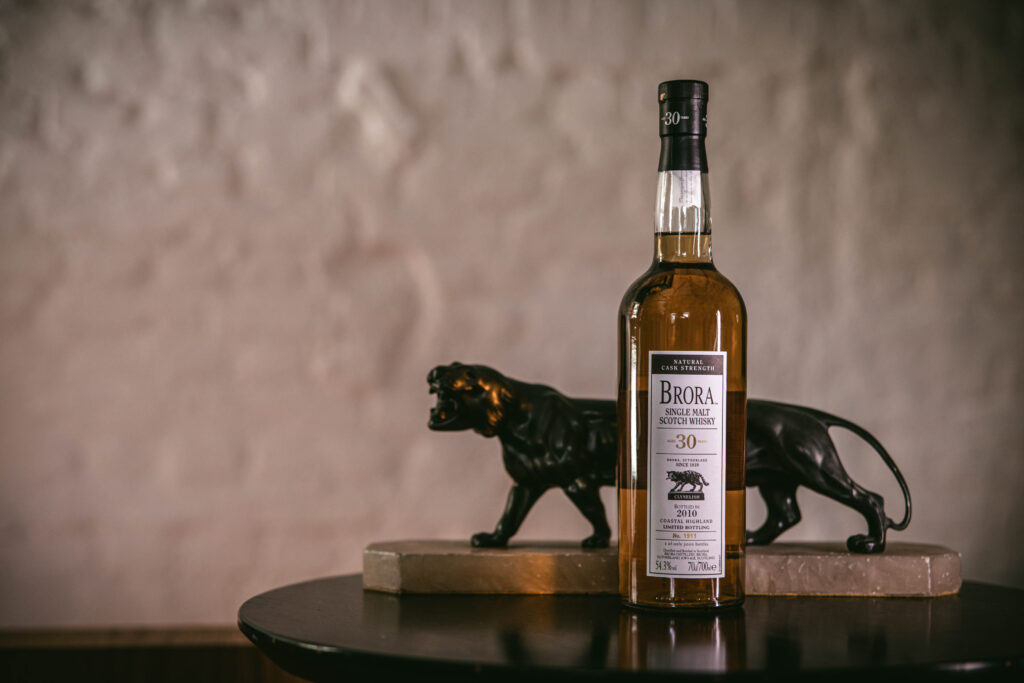
Apologies. Once again, I will talk about cinema. And I know sometimes it feels like this is a movie blog rather than whisky. But the analogy is too good to be wasted on the allegation of exhaustion. I fear, by the way, that the apologies should be doubled – because the relationship is also so direct that it is even obvious. The movie Angel’s Share, by Ken Loach.
Angel’s Share tells the story of a group of marginalized young people, who discover the pleasure of tasting the water of life. And from there, due to a series of coincidences, they learn about a very rare cask of whisky, from a distillery that has been demolished a long time ago. Malt Mill. Knowing how valuable rare whiskies are, the team devises a plan to steal a few bottles and sell them on the parallel market.
Loach’s film, in this respect, is incredibly subtle. Real characters from the whisky world, such as Charles MacLean, are perfectly incorporated into the story to the point of appearing fictional. And so does the object of desire and the pivot of everything. The Malt Mill.
Ken Loach’s entire work, by the way, has a curious parallel with the theme presented here. The UK-born filmmaker presents in almost all of his films an unromanticized image of what his country is all about. From The Wind That Shakes The Barley (perhaps his best-known film) to Me, Daniel Blake, Loach shows the disgrace of civil wars to the failure of social policies in an unpleasantly realistic approach. Something that also impacted the scotch whisky industry. After all, distilleries, like any business, are prone to the socioeconomic conditions of their country.
It’s hard for us to imagine, in the current scenario, a good reason for a distillery to close down. After all, nowadays, Scotch whisky is one of the best known and best-loved drinks in the world. But the rise to success was not linear. Scotch whisky has had a hard time during its history. And, in several situations, for a certain group or company to survive, it was necessary to sacrifice one or more distilleries. It is these, deactivated, demolished or (rarely) blown up that we give the name of Ghost Distilleries, or Silent Stills (silent stills). Let’s tell the story of some of them and the reasons behind their downfall here.
Starting with the Malt Mill, object of Ken Loach’s film. The distillery was founded in 1908 by Peter Mackie, who also owned the now-desired Lagavulin. At that time, it was his company, Mackie & Co., which distributed the malts of one of its neighbors, Laphroaig, through a commercial partnership. A partnership that collapsed when in 1907 – a year before the foundation of Malt Mill – Laphroaig decided to sell its products on its own.
Enraged, Mackie tried to sabotage his neighbor in endless ways – he even blocked the supply of water to Laphroaig. Finally, in a fit of rage as stupid as it was lavish, he built an entire distillery just like Laphroaig, just to try to get it off the market. This distillery was the Malt Mill. The idea – obviously – backfired, and in 1962 Malt Mill was demolished and its equipment incorporated into Lagavulin.

Only a small bottle of new-make remains, which is currently proudly displayed at Lagavulin’s visitor center. Until recently, there was no record of a Malt Mill bottling – except for its use in the company’s blends, with White Horse and Mackie’s Ancient Scotch. Because of this, in fact, that the international market values White Horses from the sixties and seventies. For the possibility of containing Malt Mill. No casks have been preserved – and the fictional discovery of one that serves as the backdrop for Loach’s film.
But there were (and are) a multitude of reasons why an absolutely healthy distillery stopped production and became just part of the story. One of them was Pattinson’s Crash of 1896. In the late nineteenth century, the whisky scene looked like it was today. Investing in expensive and rare whisky bottles had become a trend, and several companies were opened to explore this market niche.
Among them was Pattison, Elder & Company. According to a story by whisky historian Gavin D. Smith, they used various unhonest subterfuges to inflate the value of their stocks and their company. However, in 1896, the company began to default – and the practices came to the fore. Upon declaring bankruptcy, more than a dozen other companies in the industry went with it – partly because they were creditors of the latter, and partly because of the market’s loss of confidence in scotch whisky.
More drama followed. Some of them, external historical factors, like the Volstead Act, which decimated the distilleries of Campbelltown, for example. Or the two great wars. Focus on World War II, when dozens of distilleries stopped production to assist in the manufacture of fuel and supplies for the war. Laphroaig was one of those hit, for example. The distillery only exists today because of the genius of its owner at the time, Bessie Williamson.
Other times, the downfall of a future Ghost Distillery took place due to elements inherent to the industry and the consumer market. As, for example, the fall in popularity of scotch whisky in favor of vodka in the sixties and seventies of the twentieth century, combined with the industry’s excess production. This, incidentally, was the phenomenon responsible for silencing distilleries that are now objects of desire of every enthusiast – Port Ellen, Brora and Rosebank. Each with a different story. But, in common, excess in a time of retraction.
Port Ellen was closed in 1985, and converted into a malting floor by its owner, Diageo. At the time, the consumption of whisky in the world was far from what it is today. And Diageo had three distilleries on Islay alone – Port Ellen, Lagavulin and Caol Ila. There was no reason to keep the three, even because production was almost entirely geared towards the production of blends. The choice was natural. It may seem absurd these days, but Port Ellen was the smallest – by production volume – and the least known and least loved of the three.
Brora also had a similar history, being consequently replaced – including in his logo – by dear Clynelish. And Rosebank, considered the queen of Lowland distilleries, was passed over in favor of Glenknichiewhich had a visitor center on a green hill just like the home of Teletubbies. Finally, Glenury was also another victim of the response to the 1985 market downturn.

And there were also a few cases where the fall of that ghost distillery was due to sheer bad luck. As is the case with Banff, founded in 1824. Which caught fire in 1877. Whose owners went bankrupt in 1932. And which was bombed by the Luftwaffe in 1941 (by the way, there is a curious episode about drunken cows ). And that exploded again in 1959, until it finally began to be demolished – voluntarily – in 1983, only to, during the demolition, catch fire and explode into a magnificent ball of fire a third time.
All of these distilleries, now ghost distilleries, were victims of their time – or bad luck, in the case of the unfortunate Banff. And perhaps his disgrace has become his greatest glory. Because, over time, they became sorts of industry martyrs. Of legacy, in most cases, his barrels remain. The maturing stock, patiently waiting to be bottled. And today, the traffic jams of precisely these stocks that are disputed by collectors as – and sorry for the cliché metaphor – liquid gold.
The reason for the search is not unique, either. First of all, there is a certain romance to tasting a liquid that will never be replaced. Even more for someone in love with that drink. Second, there is curiosity. Curiosity to know what that liquid tasted like. For the most aficionados, draw comparisons and finally satiate curiosity. Prove, in the tongue, that Port Ellen is as good as Lagavulin. That Clynelish is superior to Brora. Or not.
Will we have more silent distilleries in the future? I do not know. Probably – history shows that the movement is pendular. But if we do, I hope that excellent films will also be produced about them.